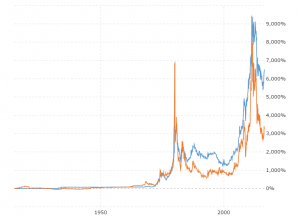Coin Collecting 101 – Circulated, Uncirculated and Proof Coins
Ever sit and look at those coins in your pocket, to see the designs, or the year, or other features? If you answer, “yes”, then coin collecting could be for you. Coin collecting has something to offer for everyone – historical interest, beautiful designs, patriotic themes, world travel, and investment too. With that in mind we are starting an occasional series of ‘Coin Collecting 101’, to explain the basics for a beginner who is thinking about collecting coins. Whatever your motive – and there are many – it really helps to have an idea of the essential elements of this pursuit, so that you don’t make too many mistakes, buy wisely, and see the value of your coins rise as a collection, and as an investment. Coin collections take up very little room, and they can become a real legacy, so let’s get started.
Circulated, Uncirculated, or Proof?
Coins are of course a means of exchange – a form of money – and that has been their primary use for centuries. Coins that are handed around in exchange for goods or services are called by collectors ‘circulated’ coins. Although you can find something rare and special in your pocket change, the chances are very low, and most circulated coins become scratched and worn quickly.
Although circulated coins can have extra value beyond what is stamped on them, they usually don’t, so coin collectors prefer ‘uncirculated’ coins. These have never been in someone’s pocket, and often have a higher value than that printed on them – their ‘face’ value.
When collectors say a coin is ‘uncirculated’, they can mean one of three possibilities:
First, and most obvious, is that the coin has simply never been used in everyday business on the street. So some quarters still in the original roll will be uncirculated in that sense, and indeed, rolls of quarters fresh from the mint are often collected by coin buffs, and they certainly are ‘uncirculated’, and can have a small premium value because of that.
Secondly, when coins are graded, that is, sorted for quality, ‘uncirculated’ can mean a high grade that is free of marks or blemishes, and has been very cleanly struck, so that the design is uniformly crisp and sharp. This meaning is often used for older coins, where most examples will be scratched or worn if they were once in circulation, and a clean coin carries an obvious premium.
Thirdly, it can be a special manufacturing process that creates a unique finish on the coin. It is this third meaning that the US Mint means when it sells ‘uncirculated’ coins. These have been struck early, with a fresh die that has not had a chance to become worn. A little extra force has been used in striking, to make the design clearer. The coin has been cleaned, and perhaps specially packaged. But these features are add-ons to the most important thing, which is that a US Mint uncirculated coin has a brilliant, shiny finish, glossier than a circulated coin, even a brand-new one.
Finally, there are ‘proof’ coins, which are the highest quality. They have been struck twice, not once, so the surface has a mirror-like finish that is even brighter than an uncirculated coin. They are always produced in smaller quantities, between 5 and 20% of the number of uncirculated coins produced, giving them premium value.
This will get you started on the basics of circulated, uncirculated and proof coins. More next time in our ‘Coin Collecting 101’ series.








